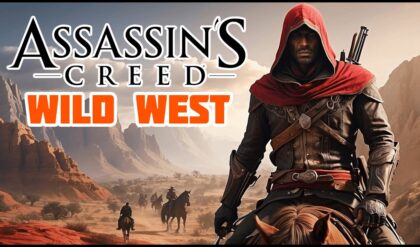Gamers, Larian Studios’ Baldur’s Gate 3 didn’t just win Game of the Year—it broke the AAA industry’s playbook! With deep storytelling, no microtransactions, and insane player freedom, it sold 20 million copies while big studios scrambled. Why can’t they crack Larian’s magic? This RPG masterpiece is rewriting the rules! 🗡️ Dive into the chaos and let’s unpack it!
👉 Curious? Search Baldur’s Gate 3’s impact and join the revolution!
The AAA gaming industry, a $200 billion behemoth, thrives on high-budget blockbusters like Call of Duty and Assassin’s Creed. Yet, in 2023, Baldur’s Gate 3, a Dungeons & Dragons (D&D) RPG from Larian Studios, upended the status quo. Selling over 20 million copies and sweeping awards, it outperformed many AAA giants while defying their formula. Its success—rooted in deep storytelling, player freedom, and a rejection of predatory monetization—has left major studios baffled, unable to replicate Larian’s alchemy. Baldur’s Gate 3 didn’t just succeed; it exposed AAA’s flaws and redefined what gamers demand.

The Baldur’s Gate 3 Phenomenon
Released in August 2023 after three years in early access, Baldur’s Gate 3 is a sprawling RPG set in the D&D Forgotten Realms. Built on 5th Edition rules, it offers tactical turn-based combat, branching narratives, and unprecedented choice. Players can romance companions, betray allies, or save the world, with over 100 hours of content. Its polished visuals, voiced dialogue, and reactive world earned universal praise, securing Game of the Year at The Game Awards 2023.
Larian, a Belgian studio known for Divinity: Original Sin, developed Baldur’s Gate 3 on a $100 million budget—modest compared to AAA’s $200 million norm. Yet, it rivaled the polish of Red Dead Redemption 2 while staying true to its CRPG roots. Its success, driven by word-of-mouth and community love, stunned an industry obsessed with marketing blitzes.
AAA’s Broken Model
AAA gaming relies on scale: massive teams, cutting-edge tech, and global campaigns. Titles like Cyberpunk 2077 or Starfield promise spectacle but often stumble with bugs, repetitive content, or microtransactions. Rising costs force studios to chase safe bets—sequels, remakes, or live-service games—stifling innovation. Crunch culture, where developers work grueling hours, persists, as does player frustration with paywalls and incomplete launches.
Baldur’s Gate 3 rejected this. Larian skipped microtransactions, offering a complete game at $60, with free updates adding content like new epilogues. Their three-year early access phase, rare for AAA, let players shape the game, ensuring polish. This player-first approach contrasted with AAA’s shareholder-driven model, where profit often trumps quality.
Why Baldur’s Gate 3 Succeeded
Larian’s success stemmed from focus and authenticity. First, they prioritized depth over breadth. Unlike AAA open worlds padded with fetch quests, Baldur’s Gate 3’s dense design rewards exploration. Every choice, from sparing a goblin to romancing a vampire, ripples across the story, creating replayability. This mirrors tabletop D&D, where player agency is king.
Second, Larian embraced transparency. Early access feedback refined combat and narrative, building trust. AAA studios, secretive until launch, often release unpolished games, as seen with Anthem’s 2019 flop. Larian’s openness fostered a loyal community, amplifying word-of-mouth.
Third, Baldur’s Gate 3 avoided greed. AAA titles like FIFA or Diablo IV lean on loot boxes or season passes, alienating players. Larian’s single-purchase model, with no DLC planned, felt refreshing. Their budget, funded partly by Divinity profits, gave creative freedom, unlike AAA’s corporate oversight.
Finally, the game tapped D&D’s cultural surge, fueled by Critical Role and Stranger Things. Its accessibility—streamlined for newcomers yet deep for veterans—widened its appeal, drawing casual and hardcore gamers alike.
AAA’s Confusion
AAA studios can’t decode Baldur’s Gate 3’s success because it challenges their core assumptions. They view scale as quality, equating bigger budgets with better games. Larian proved otherwise, delivering AAA polish on a mid-tier budget through efficient design and Unity engine mastery. AAA’s risk-averse culture shuns niche genres like CRPGs, assuming they’re unprofitable. Baldur’s Gate 3’s 20 million sales debunked this, showing demand for bold ideas.
AAA also underestimates community. Larian’s fan engagement—through patches and mod support—built loyalty, while AAA’s one-way marketing breeds skepticism. Post-launch support, like No Man’s Sky’s redemption, is rare in AAA, yet Larian made it standard, adding features without charge.
Monetization is another blind spot. AAA’s live-service obsession, seen in Avengers’ failure, assumes players want endless grinds. Baldur’s Gate 3 proved a complete, finite experience can outsell ongoing models. Studios, locked into profit-driven structures, struggle to pivot.
Industry Impact
Baldur’s Gate 3 sent shockwaves. Its success inspired a CRPG renaissance, with titles like Pathfinder: Wrath of the Righteous gaining traction. It pressured AAA to rethink monetization—Ubisoft, for instance, faced backlash for Assassin’s Creed’s microtransactions post-BG3. Smaller studios, like Owlcat Games, adopted Larian’s community-driven model, while indies saw renewed interest in narrative depth.
Players, empowered by Baldur’s Gate 3, grew vocal. Social media campaigns now demand transparency and quality, holding AAA accountable. The game’s modding community, supported by Larian’s tools, extended its lifespan, a contrast to AAA’s locked ecosystems.
Yet, AAA’s inertia persists. Studios like EA or Activision, tied to annual franchises, can’t replicate Larian’s agility. Their attempts at RPGs, like Starfield, often lack Baldur’s Gate 3’s soul, prioritizing breadth over depth. Mid-budget successes, like Hogwarts Legacy, hint at a hybrid model, but AAA remains wedded to excess.
Challenges for Larian’s Model
Larian’s approach isn’t flawless. Early access requires upfront investment, risky for studios without Larian’s Divinity revenue. Their $100 million budget, while modest, dwarfs indie funds, making replication tough. CRPGs, though popular, remain niche compared to action or shooters, limiting universal lessons.
Larian also benefited from timing. D&D’s mainstream rise and Baldur’s Gate’s legacy gave them a ready audience, unlike new IPs. AAA studios, with broader demographics, face pressure to appeal to all, diluting focus. Larian’s no-crunch stance, while admirable, may not scale to AAA’s tight schedules.
Why AAA Can’t Adapt
AAA’s structure hinders change. Corporate publishers prioritize short-term gains, pushing microtransactions over long-term trust. Development cycles, often 3-5 years, lock studios into outdated trends, unlike Larian’s iterative process. Talent churn, common in AAA, disrupts vision, while Larian’s stable team ensured cohesion.
Cultural myopia also plays a role. AAA assumes gamers want spectacle—explosions, not dialogue. Baldur’s Gate 3 proved story and agency matter more. Studios, steeped in data-driven design, struggle to embrace Larian’s instinct-driven craft.
The Road Ahead
Baldur’s Gate 3’s legacy endures. Larian, now working on new projects, left the Baldur’s Gate series to Wizards of the Coast, who tapped another studio for Baldur’s Gate 4. Its influence persists in player expectations: quality, transparency, and respect. AAA studios experimenting with single-player RPGs, like Fable, cite Baldur’s Gate 3 as a benchmark, though few match its depth.
The industry faces a choice. Embracing Larian’s model—focused design, community trust, no greed—could revive AAA’s reputation. Ignoring it risks further disconnect, as players flock to indies or mid-tier studios. Baldur’s Gate 3 didn’t just break records; it exposed a hunger for games with heart.
Conclusion
Baldur’s Gate 3’s triumph lies in its defiance of AAA norms. Larian bet on players, not profits, delivering a game that resonated deeply. AAA studios, scrambling to understand why, miss the obvious: gamers crave authenticity. As the industry evolves, Baldur’s Gate 3 stands as a beacon, proving quality and trust can outshine budgets and hype. Its lesson is simple but profound—make games for players, and they’ll roll with you.





